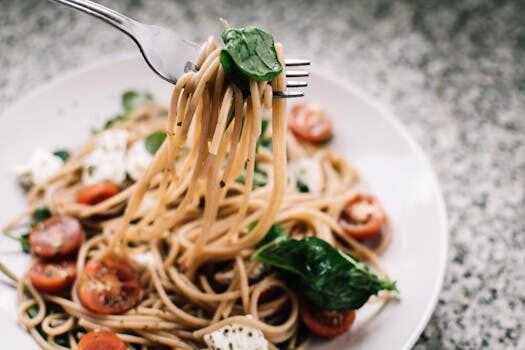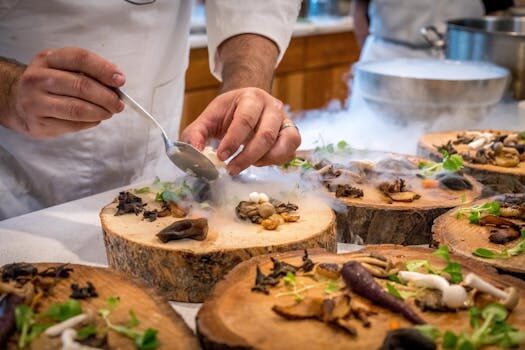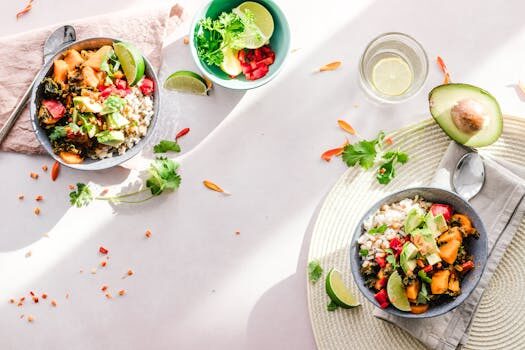Food & drinks in Polish: essential vocabulary

Embarking on a culinary journey through Poland requires a taste for adventure and a bit of linguistic skill. Whether you're ordering a hearty meal in Krakow or sipping a traditional drink in Warsaw, knowing the local food and drink terminology is essential. This article is your gateway to understanding the rich and flavorful world of food & drinks in Polish.
From iconic dishes to refreshing beverages, we delve deep into the Polish language, providing essential vocabulary that will enrich your dining experiences. Prepare to explore the savory and sweet aspects of Polish cuisine, one word at a time.
What is the Polish word for food?
The Polish word for food is "jedzenie," a term that opens doors to a variety of gastronomic delights. In Poland, food is not just sustenance but a celebration of culture and history. With every bite, you're likely to taste a blend of traditional and modern flavors.
While "jedzenie" is the general term, Polish offers a rich food vocabulary list that includes specific items such as "mięso" for meat, "warzywa" for vegetables, and "ciastko" for cookie. Familiarize yourself with these terms, and you'll navigate menus and markets with ease.
Remember, appreciating Polish food culture begins with language. By learning basic foods in Polish, you engage more deeply with the culinary traditions that make Polish cuisine truly special.

How to say drinks in Polish?
When toasting to health and happiness in Poland, it's customary to say "na zdrowie" before taking a sip of your drink. But what about ordering that drink? In Polish, the word for drink is "napój." Whether you're craving a "kawa" (coffee) or a "piwo" (beer), knowing the right terminology will enhance your experience.
Polish beverages range from "herbata" (tea) to "wódka" (vodka), each with its unique place in social and dining contexts. As you learn more about common drinks in Polish, you'll discover the drinks that have shaped the nation's traditions and continue to bring people together.
Common Polish dishes and their names
Polish cuisine is a tapestry of flavors with dishes that tell a story of Poland's history and geography. From "pierogi" (dumplings) to "bigos" (hunter's stew), the country's culinary scene is both diverse and delicious.
One must-try is "żurek," a sour rye soup that's both comforting and distinctive. Another staple is "kotlet schabowy," a breaded pork cutlet that is a favorite at Polish dinner tables. Understanding these Polish meals by name allows you to fully appreciate the richness of Polish gastronomy.
For those with a sweet tooth, "sernik" (cheesecake) and "pączki" (doughnuts) are just the beginning. The names of these dishes are as delightful as their tastes, making for a truly fulfilling culinary adventure.

Essential Polish flavors to know
Polish cuisine is characterized by its bold and hearty flavors. Key ingredients such as "koper" (dill), "majeranek" (marjoram), and "czosnek" (garlic) are staples in many traditional recipes.
The taste of "wędzony" (smoked) meats and "kiszony" (pickled) vegetables also plays a significant role in many dishes, providing a depth of flavor that is uniquely Polish. Recognizing these essential flavors will give you a deeper understanding of the traditional Polish dishes you'll encounter.
How to order food in Polish restaurants?
When visiting a Polish restaurant, the ability to order food in the local language enhances the dining experience. Begin with a polite greeting such as "dzień dobry" (good day) and express your choices with phrases like "Poproszę" (I would like) followed by the dish name.
If you have dietary restrictions, phrases like "jestem wegetarianinem" (I am a vegetarian) or "czy to zawiera gluten?" (does this contain gluten?) can be incredibly helpful. Being able to communicate effectively in a Polish dining setting is a sign of respect for the culture and will often be met with appreciation and better service.
Must-try Polish fruits and vegetables
Polish cuisine makes excellent use of fresh, local produce. From "jabłka" (apples) to "truskawki" (strawberries), the fruits of Poland are as delicious as they are varied.

Vegetables like "buraki" (beets) and "kapusta" (cabbage) are not only nutritious but also central to many Polish recipes. Exploring the local farmer's markets and trying these fresh ingredients can lead to a greater appreciation of the country's culinary diversity.
Understanding Polish food slang
Just like any language, Polish has its share of slang, especially when it comes to food. For instance, "żarcie" is a colloquial term for food, often used in informal settings.
Learning slang terms can provide insights into the casual side of Polish food culture and allow for more natural conversations with locals. However, it's important to use slang appropriately, as some terms may be too informal for certain situations.
Food & drinks in Polish: Preguntas frecuentes
What is the Polish word for drink?
In Polish, the word for a beverage or drink is "napój." It's a versatile term that can be used for both alcoholic and non-alcoholic drinks. Whether you're ordering a "sok" (juice) or a "piwo" (beer), "napój" is the keyword to remember.
Learning phrases like "Mogę prosić o napój?" (Can I have a drink?) can be quite useful, especially in social situations where you want to enjoy Poland's beverage offerings with confidence.

What is a typical Polish food?
One of the most typical Polish foods is "pierogi." These stuffed dumplings come with a variety of fillings, from savory "mięso" (meat) and "ser" (cheese) to sweet "owoc" (fruit) fillings. "Pierogi" are a beloved part of Polish food culture and a must-try for any visitor.
Other typical dishes include "rosół," a nourishing chicken soup, and "gołąbki," cabbage rolls filled with meat and rice. Each dish offers a taste of Poland's culinary heritage and is a testament to the country's culinary creativity.
How do you say different foods in Polish?
To say different foods in Polish, you start with the basic term "jedzenie" for food, and then specify the type. For instance, "owoc" for fruit, "warzywo" for vegetable, "chleb" for bread, and "ciasto" for cake.
By learning a variety of food terms, you can effectively communicate whether you're shopping for groceries or ordering at a restaurant. The more specific you are with your food vocabulary, the easier it is to indulge in the diversity of Polish cuisine.
How to order a drink in Polish?
Ordering a drink in Polish is straightforward with the right phrases. Start with "Poproszę" (I would like), followed by the drink's name. For example, "Poproszę kawę" (I would like a coffee) or "Poproszę piwo" (I would like a beer).

For a more specific order, you can add details like "bez cukru" (without sugar) or "z mlekiem" (with milk). As with food, being able to order drinks in Polish shows cultural appreciation and often leads to a more authentic and enjoyable experience.
As you embark on your culinary exploration of Polish cuisine, remember that the language of food is as rich as its flavors. Whether you're indulging in a hearty "zupa" (soup) or toasting with a glass of "wino" (wine), the words you use will not only help you navigate menus but also connect with the heart of Polish culture. Enjoy the delicious journey through food & drinks in Polish.
For a visual taste of Polish cuisine, watch this engaging video that showcases the variety and richness of Poland's culinary scene:

Leave a Reply